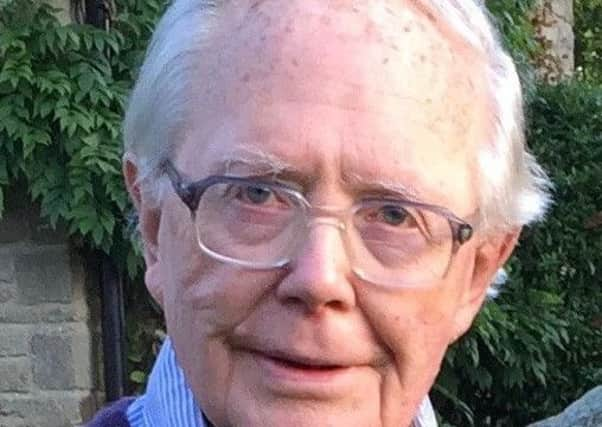Obituary: Sir David Goodall, diplomat


Margaret Thatcher, who had always been fascinated by India, rewarded David Goodall with the post of High Commissioner to Delhi for his remarkable service to her in the two most difficult areas of her prime ministerial career: the Falklands War, and Ireland.
For restoring the sparkle to relations with the former jewel in Britain’s imperial crown, Goodall was to prove just the man. His four and half years exploring the sub-continent – just as the Cold War was ending and modern India was opening up her economy to the world – would both bring him personal fulfilment, and greatly improve British-Indian relations.
Advertisement
Hide AdAdvertisement
Hide AdThe dapper, bespectacled Goodall, a career diplomat, had already shown himself a source of wisdom since first joining the inner circle of government as Falklands War Cabinet Secretary and Deputy Secretary, Cabinet Office, four days before troops landed at San Carlos.
After victory, on 14 June, Goodall, who was a Roman Catholic, liaised for the government with Roman Catholic clergy, and helped to calm troubled waters in the preparation of the thanksgiving service at St Paul’s Cathedral. At one point, it is recorded, the Queen was asked to intervene to stop an Anglican clergyman’s plan to have the Lord’s Prayer said in Spanish.
Goodall’s Catholicism sprang from Irish family roots of which he was proud, and in December 1982 he reminded the prime minister of a matter that was of concern to a number of senior civil servants, and close to his own heart: the question of how to bring peace to Northern Ireland. British soldiers sent there were still losing their lives, and the British government seemed to have no answer. He prompted her to say she wanted to take action on Ireland if the 1983 general election returned her to power.
When she won a second term in office, Goodall went on to initiate the process that would lead to the 1985 Anglo-Irish Agreement. The excuse for a discussion between Goodall and Michael Lillis, advisor to the Taoiseach, Dr Garret FitzGerald, was Goodall’s and Lillis’s membership of a British-Irish committee set up to consider on non-political matters such as educational links. Their conversation, conducted during a stroll along Dublin’s Grand Canal in September 1983, paved the way for more open negotiations.
In 1984 Goodall returned to the Foreign Office as Deputy Under-Secretary of State. He had earlier served in Cyprus, Indonesia, Germany and Kenya, and represented Britain at Nato-Warsaw Pact arms talks in Vienna, before becoming head of the FO’s Western European department, then Minister in Bonn from 1979-82.
An only child, he had been educated at Ampleforth College, North Yorkshire, and Trinity College, Oxford, where he studied Classics. After serving as a 2nd lieutenant in the King’s Own Yorkshire Light Infantry in Kenya and Cyprus from1954-56, he had joined the Foreign Office in 1956.
He married, in 1962, Morwenna Peecock, and they had two sons, Dominic and John, and a daughter, Elisabeth. His wife and children survive him.
Goodall arrived in India in 1987 to find, as he later noted: “a great deal of admiration, a great deal of resentment, an intense dislike of anything that could be interpreted as patronising and a general suspicion of British good intentions.”
Advertisement
Hide AdAdvertisement
Hide AdAt the time, three years after the assassination of the Indian prime minister Indira Gandhi by her own Sikh bodyguard, there was a further challenge: the need to assuage Indian fears that terrorists were being given safe haven in Britain.
“I saw it as my primary task to dispel those suspicions and get the Indo-British official relationship back on an even keel,” Goodall recalled.
Living in the palatial High Commissioner’s residence, he nevertheless found obstacles in his way for the first year and a half if he wished to see the Indian prime minister, Rajiv Gandhi.
Relations warmed thereafter, Goodall and Rajiv enjoying arguments. A joke went the rounds that the diminutive Goodall was a giant-slayer because several British and Indian politicians who dined with him found themselves, by coincidence, removed from their jobs; one who kept his post survived, wags said, because he had not realised who Sir David was.
Goodall and his wife travelled all over India. In between introductions, Goodall, an accomplished artist, seized every opportunity to paint what he saw. He carried his watercolour paints with him at all times. His works would be exhibited in Britain and India, and published in “Remembering India”(1997) and “Ryedale Pilgrimage” (2000).
He was made KCMG in 1987, and in 1991,GCMG.
A lover of stirring tales, Goodall is remembered for recounting Homer’s Odyssey on a drive across Rajasthan, and by his children and grandchildren for delighting them with stories he made up for them extempore.